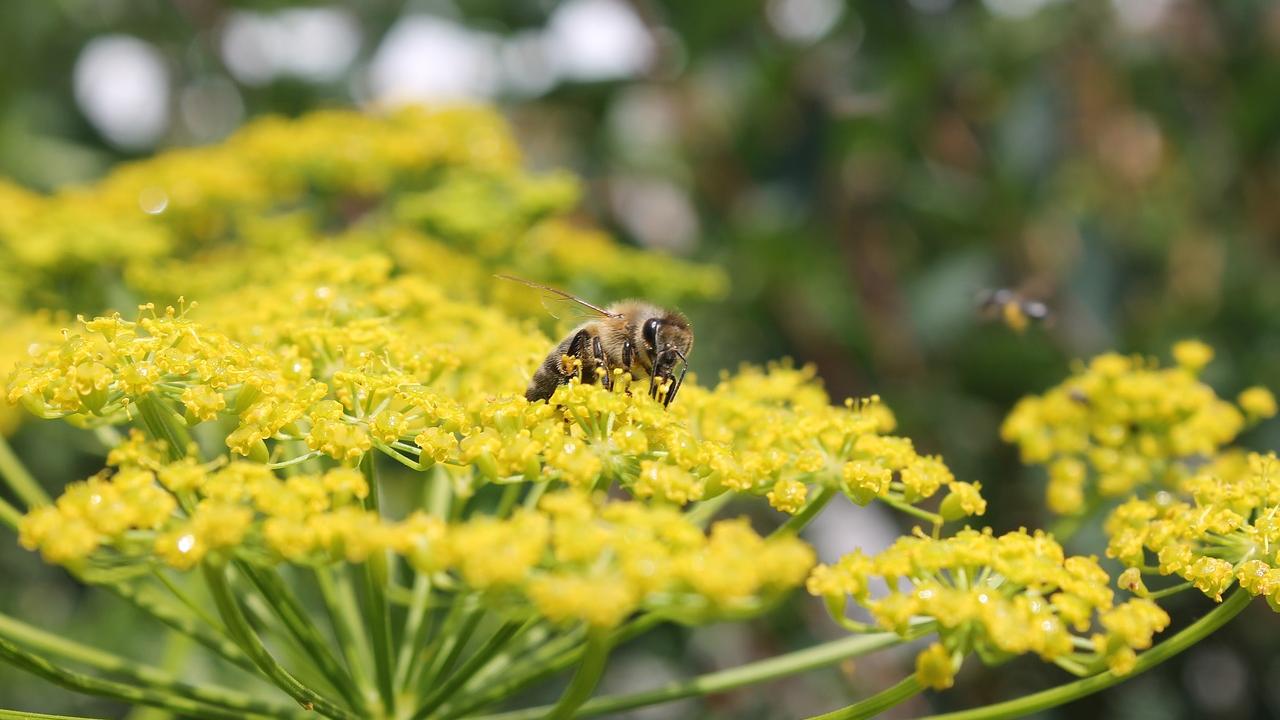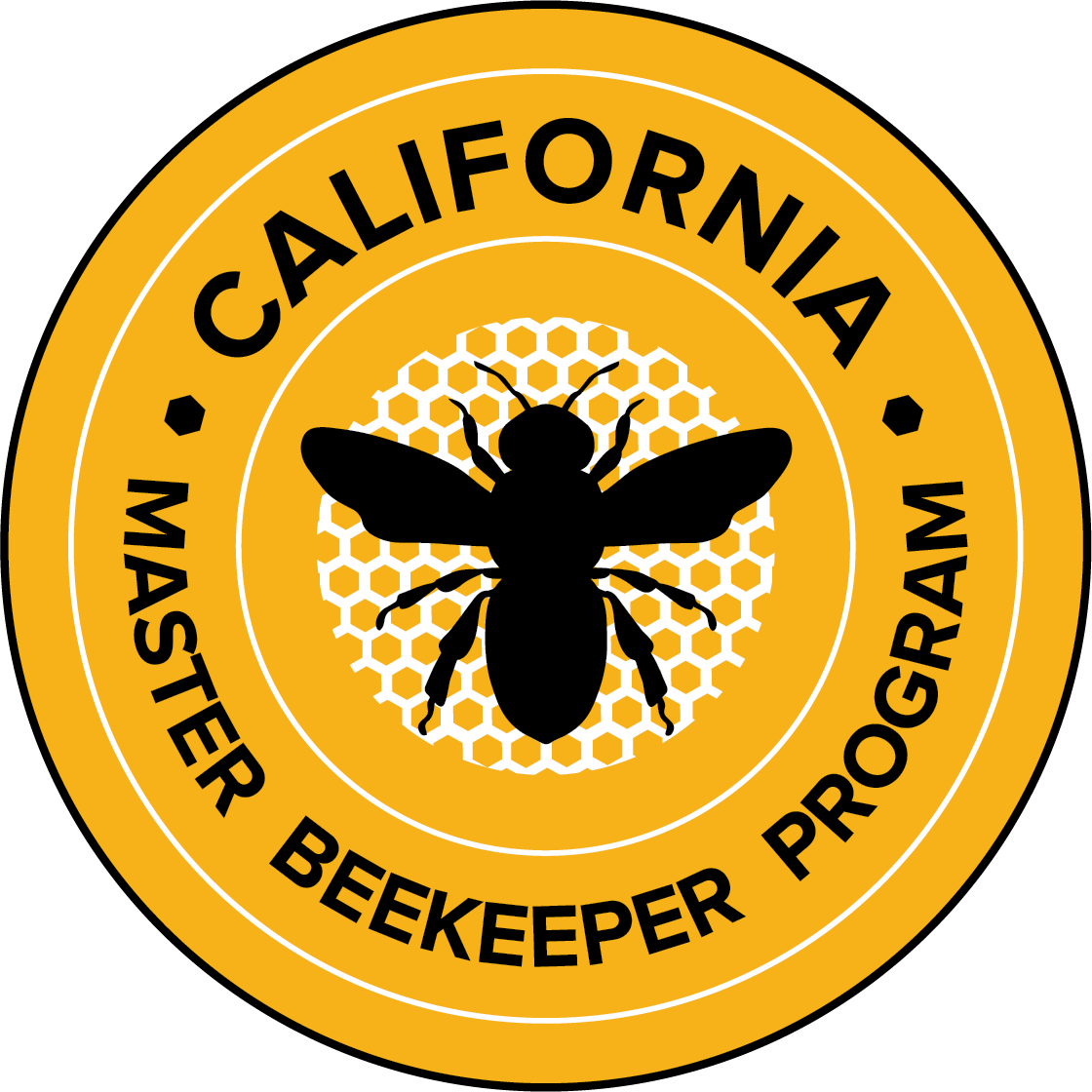
The Color of Honey is of Concern to the Beekeeper, not the Bee
CAMBP Member Blog by Mark Carlson, January 2020
Beekeepers are experts when determining the pedigree of honey. And yet, human sensory analysis, particularly our focus on vision, could be considered trivial for honey bees who mostly work in the dark with specialized gustatory receptors on their antennae, mouthparts and tarsi. Luckily, a rose by any other name still smells as sweet, and my local honey crop (a light amber) was made in-part from another distinctively aromatic flower: wild fennel.
Foeniculum Vulgare is an invasive, perennial herb (CalEPPC List A-1). For those who haven’t seen the plant before, imagine Dr. Seuss balancing little yellow umbrellas on 6-foot-tall spindly jointed nodes- that’s fennel (Figure 1). Handling the feathery leaves1 , pollen and seed provide the unmistakable confirming scent: anise. As a result, fennel honey is in good company with black jelly beans, absinthe and ouzo. When evaluating aroma and flavor of a new honey, our nose and tongue provide the cursory (and often tasty) introduction. The organoleptic analysis of my fennel honey has produced inconsistent results (i.e. some judges tasted the licorice, mostly bakers, while others did not) but honestly I’m guilty of experimenter bias. As if trying to calibrate a gas chromatograph, I often wave fennel seeds under the noses of honey judges before asking them to detect the licorice flavors. To supplement blind tasting, physical and chemical tests can be used to verify that a honey contains the product declared on the label. Predominant floral sources of varietal honeys have been identified through the analysis of pollen (i.e. melissopalynology, a topic presented at my local beekeeping association by Dr. Irina Delusina, a palynologist in the Department of Earth and Planetary Sciences at UC Davis), volatile aroma profiles with gas chromatography (mentioned by Amina Harris at UC Davis, a lead contributor to the UC Davis Sensory Evaluation of Honey Course) and nuclear magnetic resonance spectroscopy2 .
The mission of our CAMBP community is to use science-based information to educate stewards and ambassadors for honey bees and beekeeping. Like many of us in this community, I’ve become a target for honey related questions. I was recently asked to explain honey, still in the frame, that looked like ‘antifreeze’ with a ‘greenish tint and strange gelatinous consistency’. One possible answer was that the bees were foraging on thistle3 . However, if thistle were not available to the bees, what tests might be appropriate to evaluate green honey? As I prepared this article, a CA Master Beekeeper, who attended two honey competitions, Apimondia (Montreal) and Good Food Awards (San Francisco), shared his thoughts on the quality requirements of the two competitions. Apimondia’s honey quality assurance criteria was also recently mentioned in Bee Culture Magazine (Kim Flottum, November issue) and in the Bees for Development Journal (Edition 132). Adulterated honey from willful manipulation and/or poor beekeeping practices has been detected using the following parameters: moisture content, invert sugars, saccharose, carbon isotope ratio, ultrafiltration, and pesticide and antibiotic contamination (e.g. chloramphenicol, fluoroquinolone and nitrofurans). While I am seeking the technical feedback from our CAMBP community on these and possibly other evaluation techniques (e.g. where do most of the CAMBP Members get their honey evaluated? Do they bother?), it also seems fitting to remind those evaluating honey that our bees are still the true experts. To the bee, a bouquet of volatiles possibly containing anethole at any time, is aristocracy4 .
- 1Use caution when handling other parsnip plants found along roads and sidewalks. Giant hogweed and wild parsnip can be hazardous.
